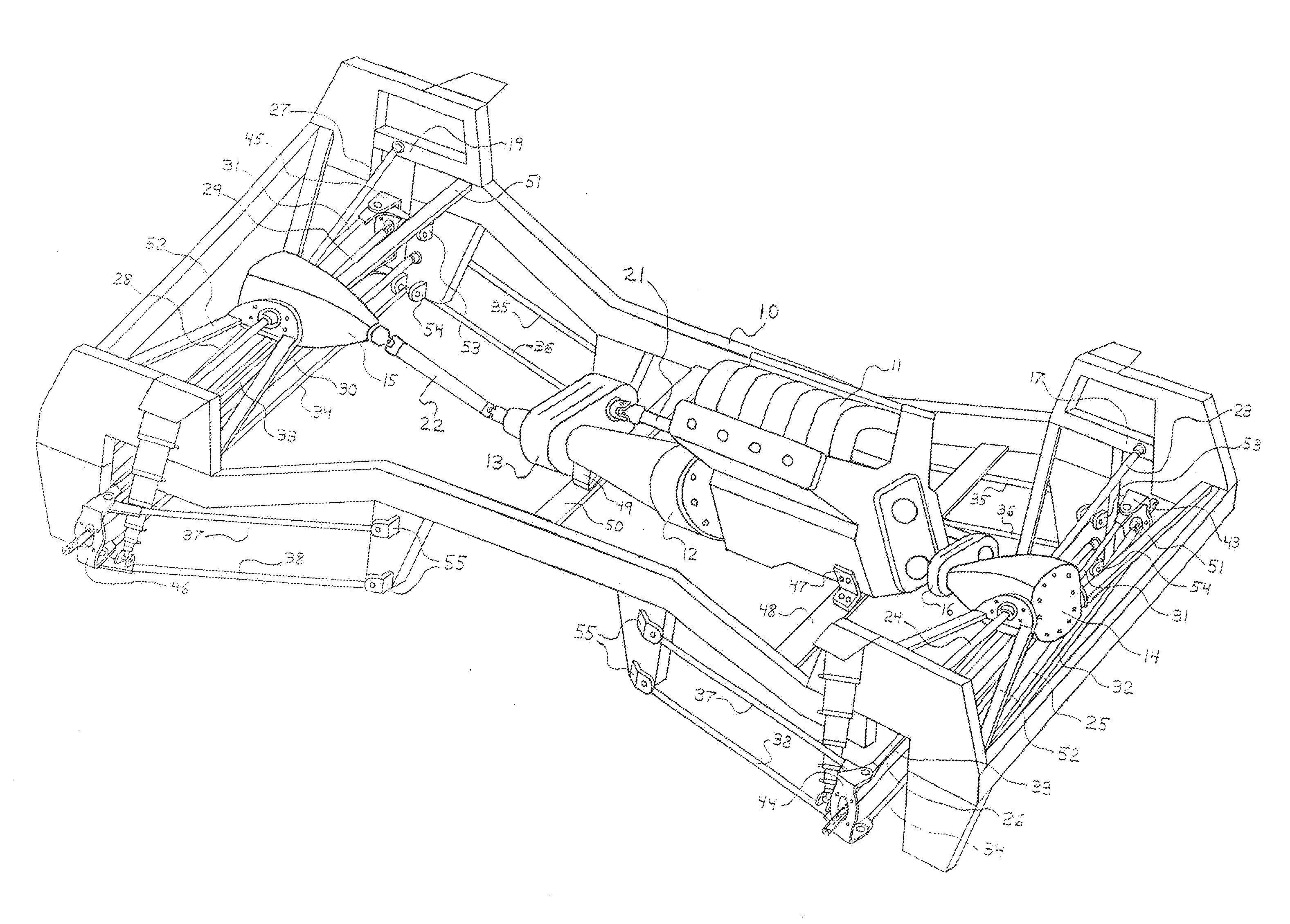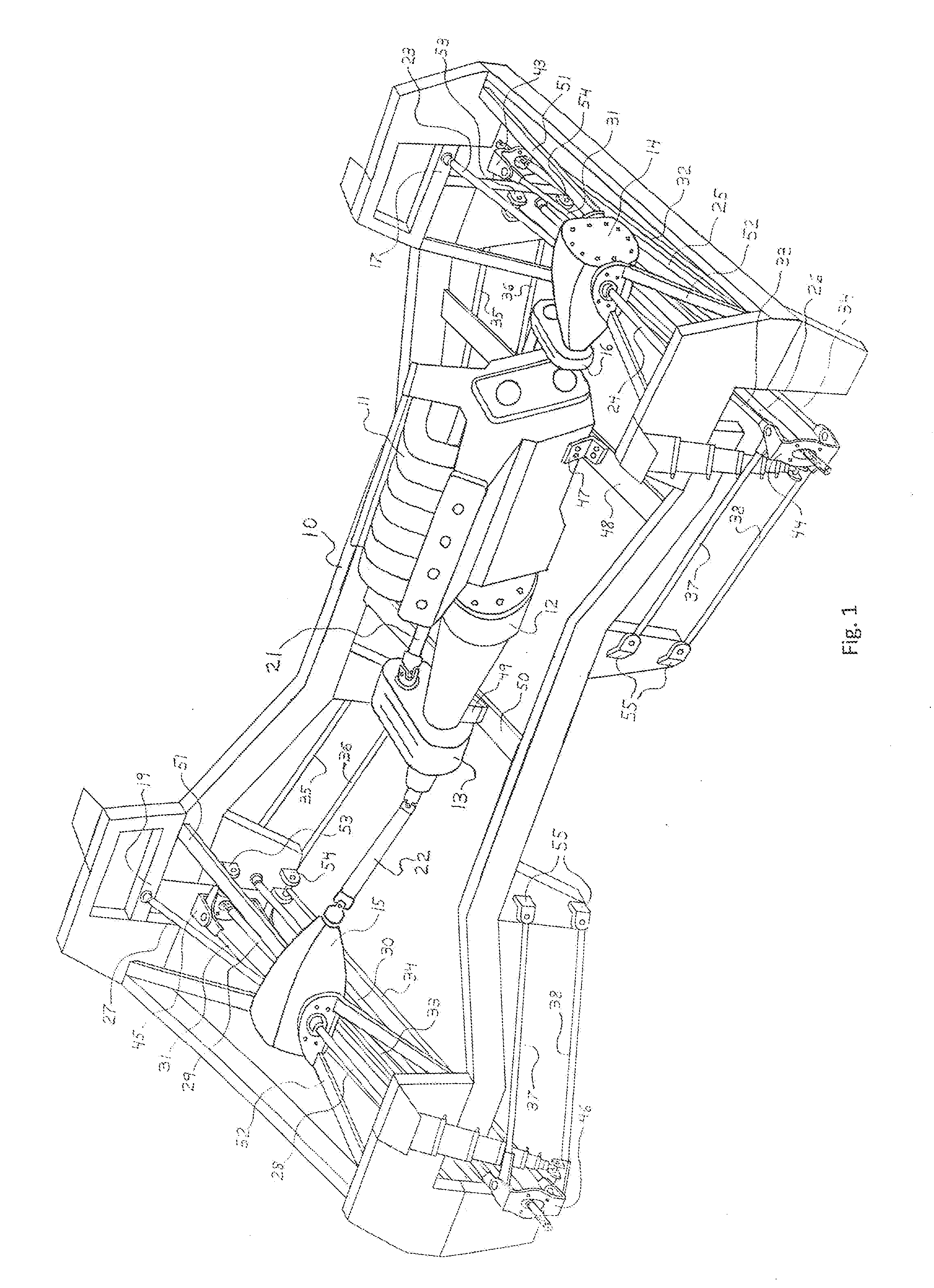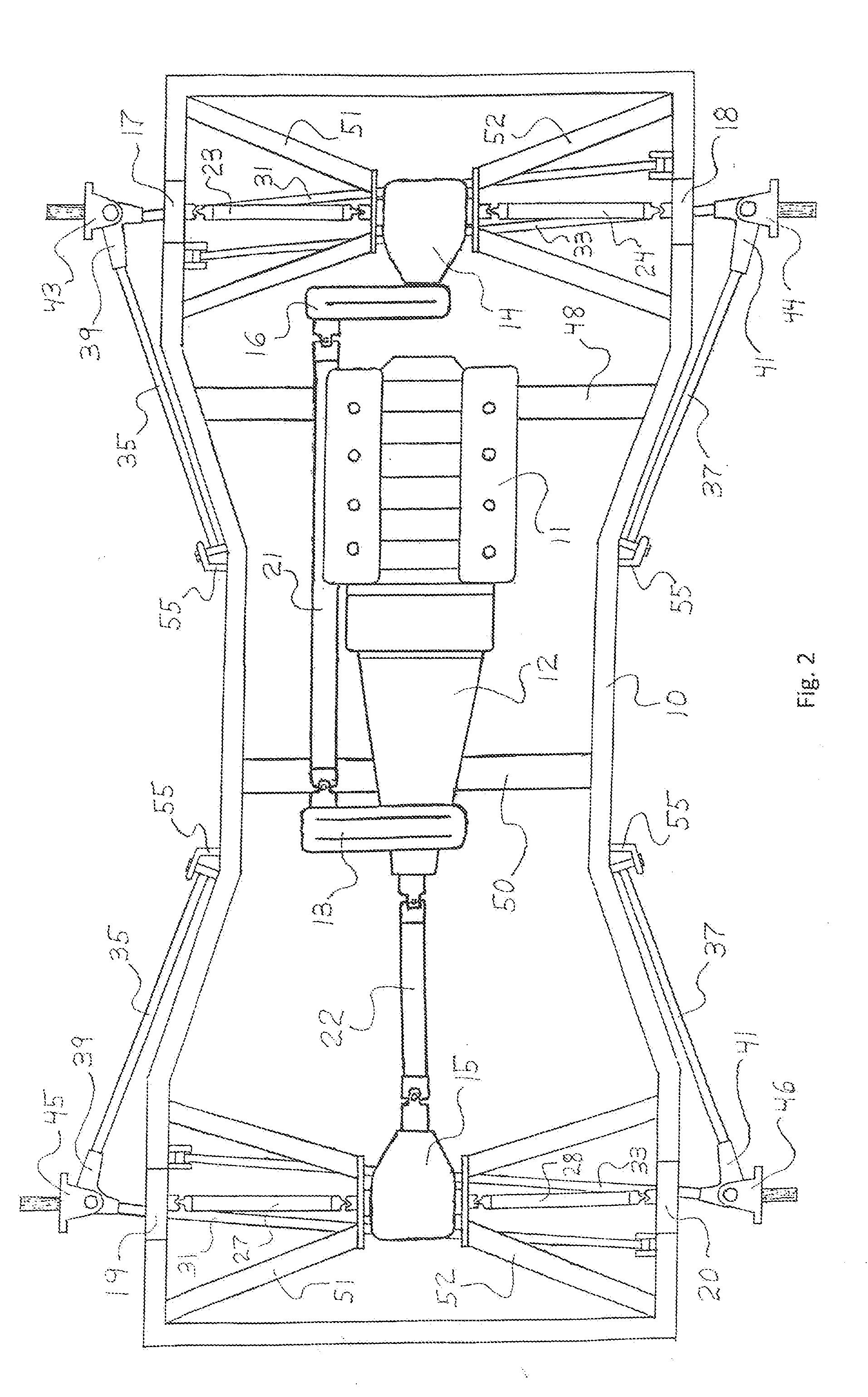Drivetrain For Independent Suspension System
a technology of independent suspension and drivetrain, which is applied in the direction of propulsion parts, propulsion mounting, transportation and packaging, etc., can solve the problems of inherently limited articulation capability, interference would otherwise occur, and the second step is more difficult to address, so as to facilitate smooth, efficient and vibration-free transmission of power, the effect of minimizing the unsprung weigh
- Summary
- Abstract
- Description
- Claims
- Application Information
AI Technical Summary
Benefits of technology
Problems solved by technology
Method used
Image
Examples
Embodiment Construction
[0085]The present invention is directed to a drivetrain which is operably installed with the front and rear independent suspension systems disclosed in U.S. patent application Ser. No. 14 / 059,062, each suspension system based on a type of double wishbone configuration per wheel. The drivetrain includes means for receiving power at one frame side and then delivering that power to the wheel opposite the one frame side, this means accomplished via a unique gearbox known as a reverse power coupler.
[0086]Referring now to the drawings, a drivetrain for a four-wheel drive vehicle is schematically shown installed within a frame 10 and interactively associated with a powertrain. The drivetrain includes the front and rear differential housings 14 and 15, offset power coupler 16, and front and rear driver and passenger reverse power couplers 17 and 18, and 19 and 20, respectively; and the powertrain includes an engine 11, transmission 12, and transfer case 13. The means for transmitting power ...
PUM
 Login to View More
Login to View More Abstract
Description
Claims
Application Information
 Login to View More
Login to View More - R&D
- Intellectual Property
- Life Sciences
- Materials
- Tech Scout
- Unparalleled Data Quality
- Higher Quality Content
- 60% Fewer Hallucinations
Browse by: Latest US Patents, China's latest patents, Technical Efficacy Thesaurus, Application Domain, Technology Topic, Popular Technical Reports.
© 2025 PatSnap. All rights reserved.Legal|Privacy policy|Modern Slavery Act Transparency Statement|Sitemap|About US| Contact US: help@patsnap.com



